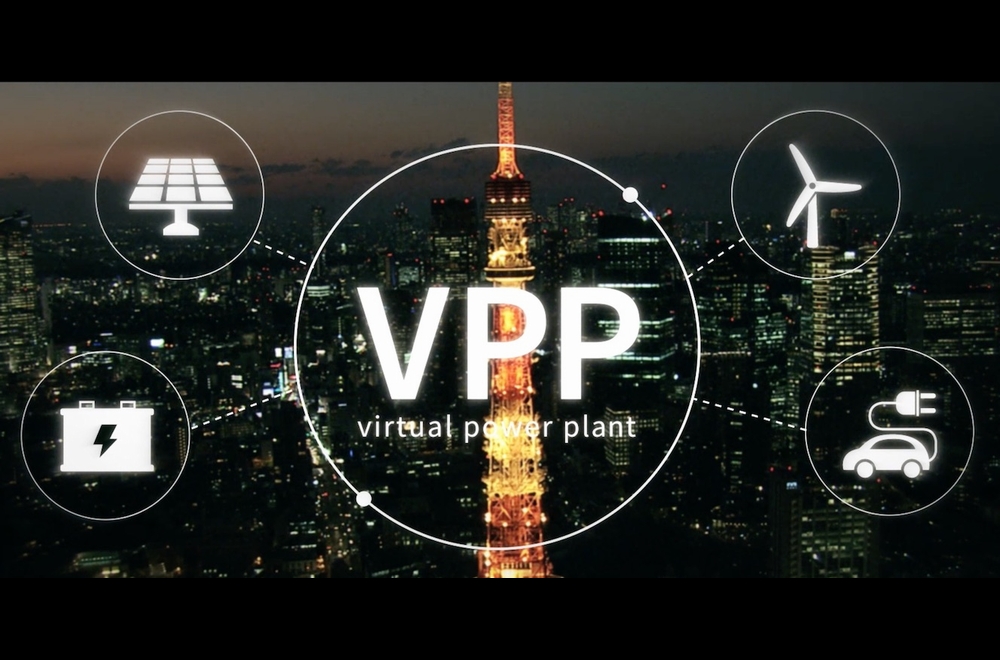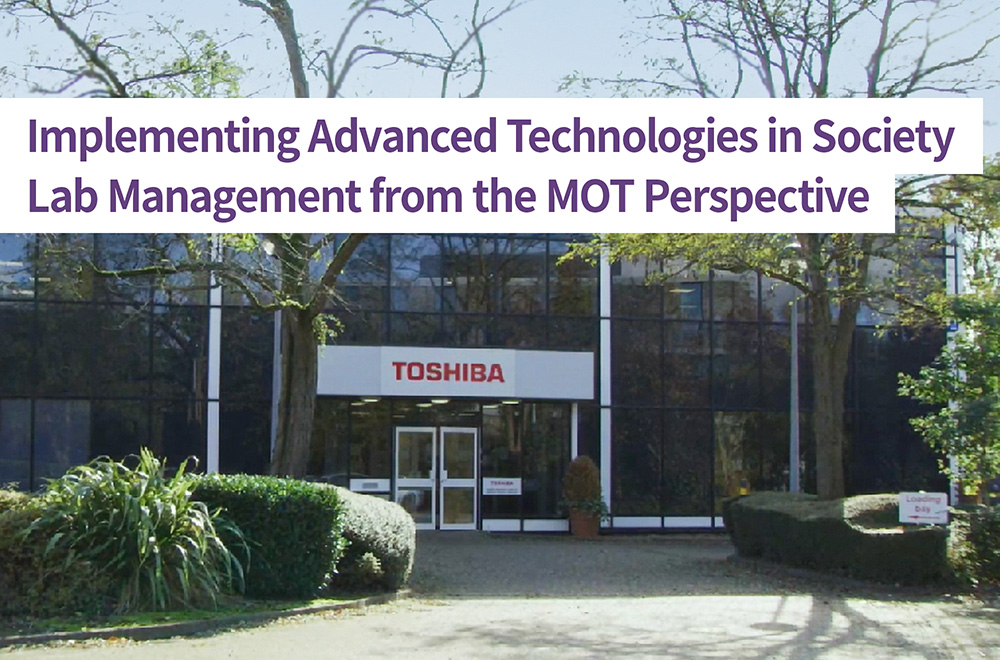Will Virtual Power Plants Herald a New Era of Business?
2020/01/29 Toshiba Clip Team
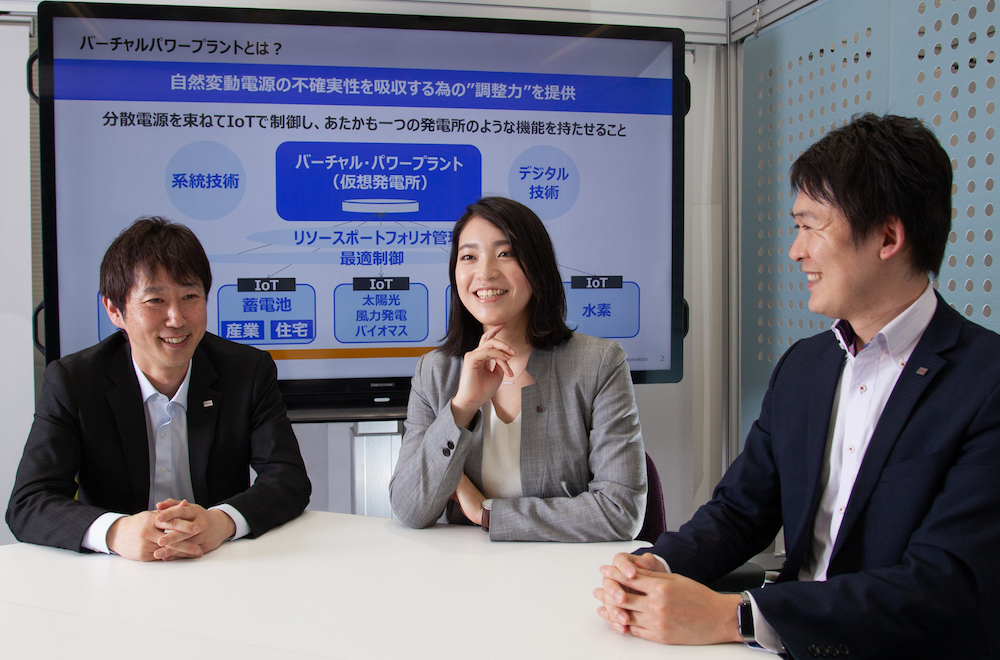
Virtual Power plants (VPPs): What lies beyond the frontier
You may have heard of virtual reality, but what about virtual power plants, or VPPs? A recent buzzword in the energy industry, they function, as the name suggests, like an actual power plant, but on the cyber level. They allow for the remote control of scattered energy sources, like storage batteries and distributed energy resources, through the use of IoT equipment.
In recent years, countries all over the world have begun looking for methods to move away from large-scale power generation using fossil fuels. So far, the spotlight has been on renewable energy like solar power and wind power. These, however, are heavily affected by the weather and other natural conditions. As their use becomes more widespread, our energy supply will become more unstable.
That is where VPPs come into play. VPPs can provide smart management of large-scale power generation and distributed energy resources, and make the adjustments necessary to maintain the balance between supply and demand in the power grid. And the benefits don’t end there. Infrastructure for the new energy era will be a big step towards the realization of a decarbonized society that isn’t dependent on fossil fuel. The creation of platforms require various players to work together, so the economy can be vitalized. And of course, the reduction in energy cost would be a great help to us, the consumers.
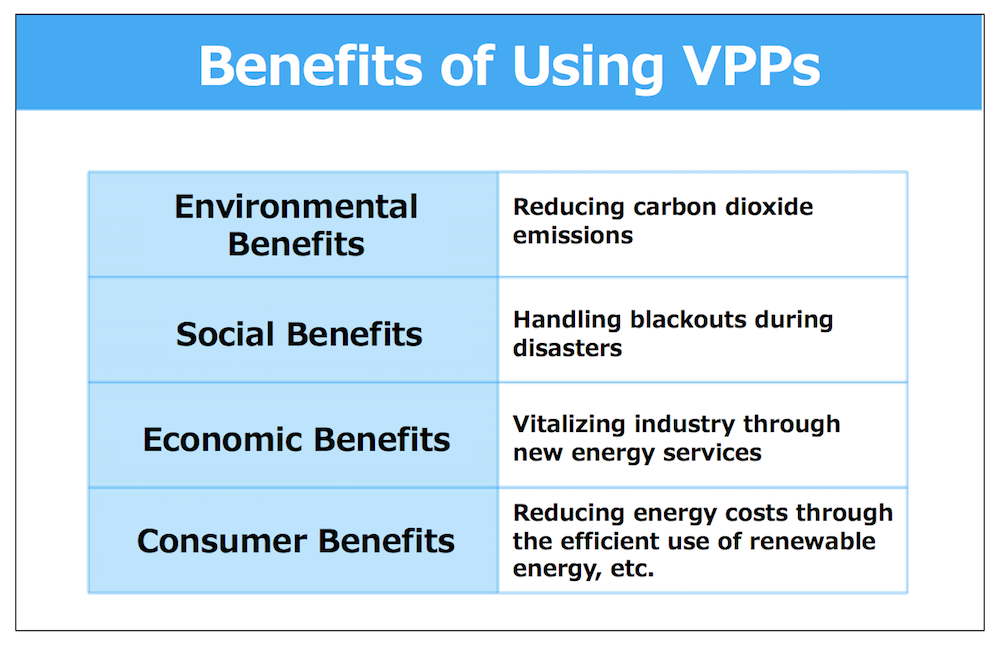
Benefits of Using VPPs
VPP efforts are underway in the Toshiba Group as well. Toshiba Energy Systems & Solutions Corporation( hereafter “Toshiba ESS”) has established Energy IoT Dept. focused on VPPs, where efforts are being made to commercialize VPPs through various avenues. But how are we supposed to gain an edge in the field of VPPs, and how do we realize a next-generation energy service? To answer these questions, we talked to three members of the Energy IoT Dept. at Toshiba ESS.
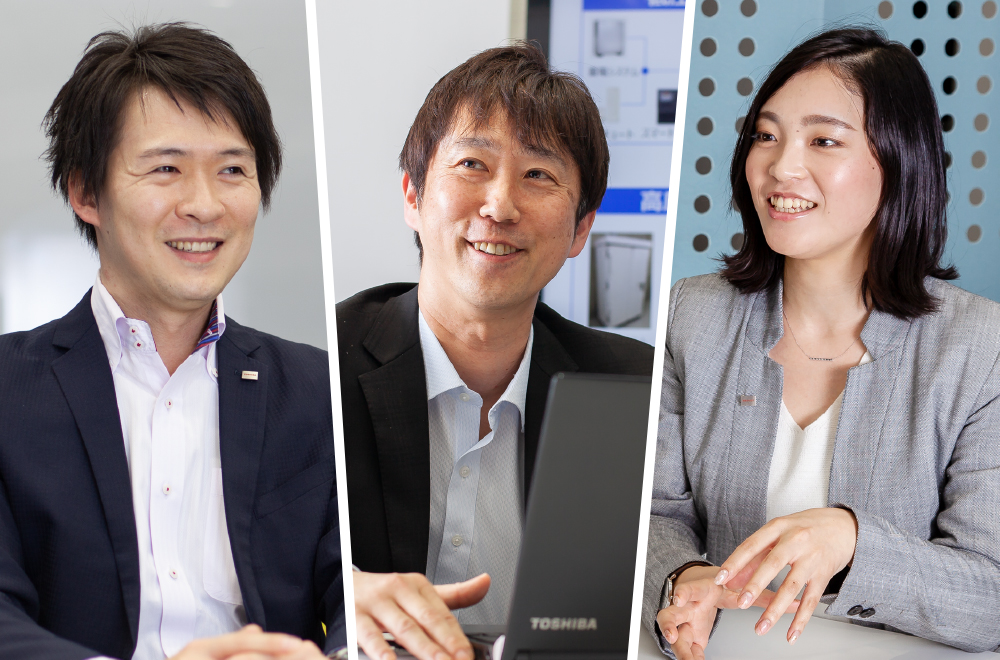
VPP and the journey to commercialization
For two years, starting 2016, Toshiba ESS had conducted trialing projects within Japan, to verify that they could use IoT to control multiple storage batteries. Following the results of these projects, the company’s efforts were recognized and in 2019 Toshiba ESS began collaboration with TEPCO (Tokyo Electric Power Company) Energy Partner, Inc., offering a VPP operation service that provided remote control of a specific “group” of storage batteries, installed in 11 elementary schools in Yokohama region. The goal was a more efficient operation—one that would take the specific circumstances of power systems and storage batteries into account, while retaining the power necessary for any possible emergencies.
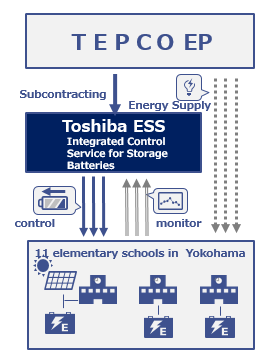
Source: Press Releases & News, Toshiba Energy Systems & Solutions Corporation
https://www.global.toshiba/ww/news/energy/2018/12/news-20181217-01.html
“We’ve developed a technology that enables efficient control of multiple storage batteries, and we’ve been building a system that can handle distributed energy resources. We have multiple verification tests, trials and demonstrations going on at any one time within the Energy IoT Dept. I work in the operation of the on-site power generation service trialing project. A third party (electricity retailer) owns the storage batteries and solar power generation equipment, and provides the power generated on consumer grounds to the facility, while making use of the storage batteries,” said Ms. Maruyama.
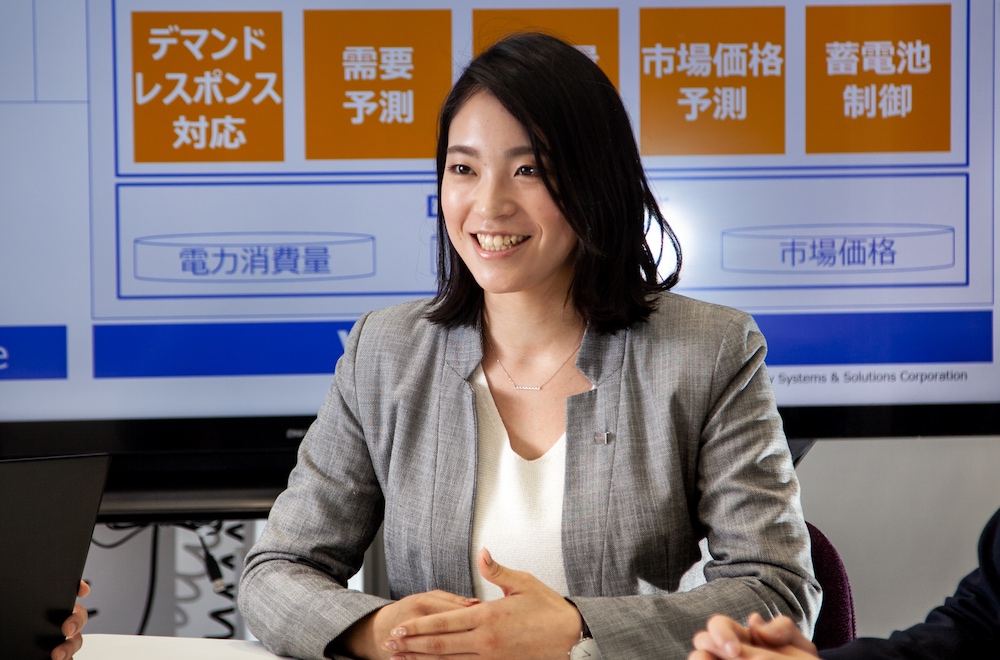
Honami Maruyama, Energy IoT Dept. Grid Aggregation Div., Toshiba Energy Systems & Solutions Corporation
“Toshiba’s role is to provide control in a way that allows different uses of the storage battery. In addition to just storing surplus solar power, they can be used for peak shaving, or reducing the costs incurred by electricity retailers when purchasing power. During the demonstration project, we kept very close communication with our partner—the electricity retailer—reporting any bugs to the development team, and making the system better. It was a very meaningful verification test in terms of our goal of commercializing a VPP operation service,” said Ms. Maruyama.
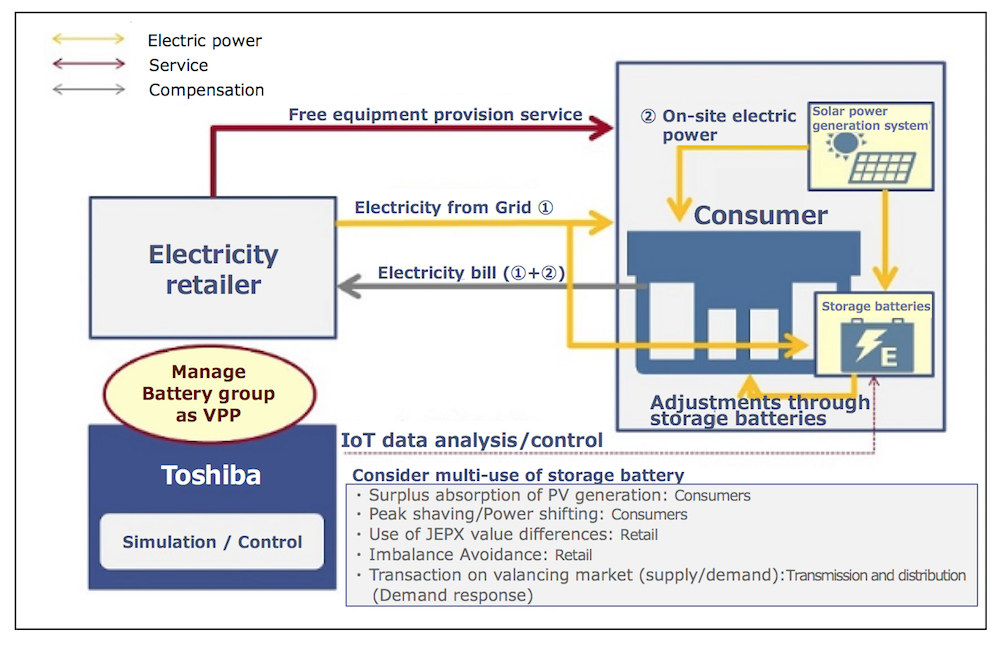
The aforementioned project—with the elementary schools in Yokohama—is now a full-fledged operation service and business. What is happening there, on the front lines? 2019 is also a big year in terms of energy in Japan, since it marks the beginning of the end of the buyback guarantee period for Japan’s feed-in tariff system, a system in which the government would purchase the surplus power produced through residential solar power generation. What will become of this surplus power in the future? Here at Toshiba, we see it as a business opportunity.
“We asked ourselves if we could create a peer-to-peer commercial platform that would allow consumers with surplus power to exchange it amongst themselves. We’re looking through overseas case studies and searching for a possible business. This platform could also be on a much bigger scale and go beyond the realm of energy if we, for example, use cryptocurrencies or points in these transactions. This would allow us reach into a business that transcends the field of power generation, that goes beyond selling things or services. I believe VPPs are full of immense opportunity,” said Mr. Kimura.
New and old come together in fusion of long-time infrastructure knowledge and cutting-edge IoT
VPPs rely on the integration of infrastructure, like power generation and electricity storage facilities, and cutting-edge IoT technologies. Fortunately, Toshiba has been involved in the construction of energy infrastructure for many years, and has cultivated various technologies related to renewable energy. And this knowledge will of course be put to full use in the realm of VPPs.
“Toshiba has provided power system technologies to energy companies throughout Japan. With renewable energy, you need technology that can predict things like the amount of power that will be generated, or the amount of demand, and that provides control. We know a lot about how the behavior of solar power generation and storage batteries affects infrastructure. VPPs, which collect data from distributed energy resources and provide control over them, will let us play to this strength.
Until now, VPPs have also been an uncharted field of the energy sector. The Japanese government is now starting to issue new systems and policies for their implementation. We at Toshiba have spent many years working with the government and with various energy companies. We’re aware that we’re one of the very few companies capable of creating an architecture that can cover the entire industry. It’s not for nothing that Toshiba has worked on everything from power systems to consumer living environments—there has to be something that only we are capable of doing,” said Shingai.
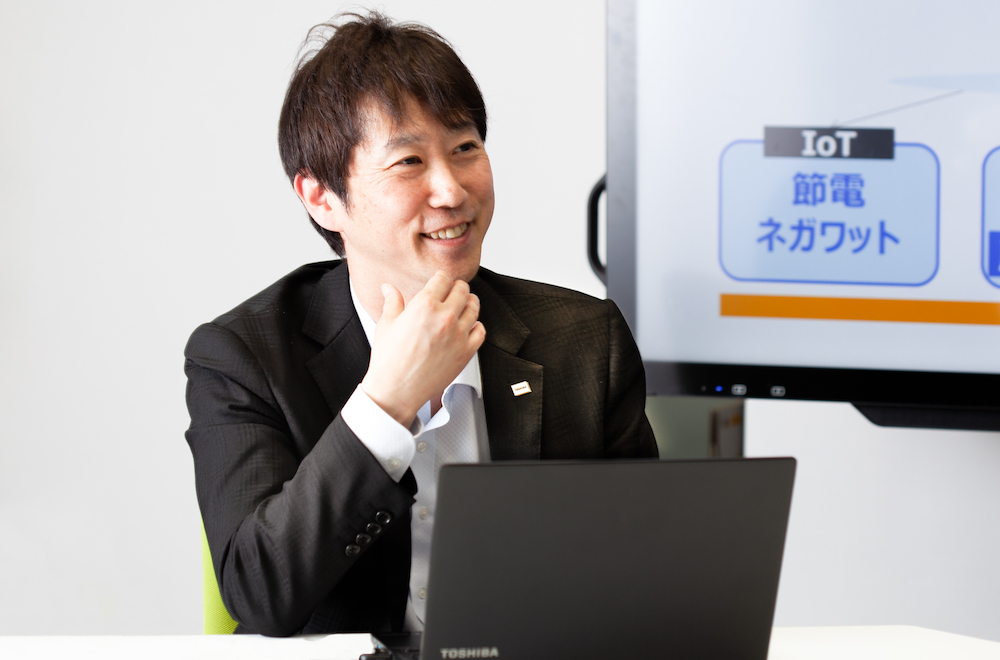
Hideki Shingai, General Manager, Energy IoT Dept., Grid Aggregation Div., Toshiba Energy Systems & Solutions Corporation
And what about cutting-edge IoT technologies? The Toshiba Group’s Toshiba Digital & Consulting Corporation is currently working to establish structure and strengthen human resources in the field of digital transformation.
“Toshiba Group’s strength is that we’re in a wide variety of businesses, and can integrate our knowledge of the physical with digital technologies. This is exactly what cyber-physical systems are about. This fusion of physical and digital that goes beyond the realm of energy, is where our new knowledge will come from,” said Shingai.
Younger employees lead the way for VPP
The Energy IoT Dept. that handles the commercialization of VPPs is a young team, with members mainly in their 20s and 30s. Their method is to start many projects, each in small groups, with comprehensive plans that include everything from verification testing to commercialization—all with a notable sense of urgency.
“In working to commercialize VPPs, you have to have an understanding of the power generation, power systems, and retail businesses, and IT technologies like IoT. VPPs cover a wide variety of fields. Our division has employees that know a lot about the energy industry and about IT technologies, and every day, I learn something new from them. We also have a lot of project leaders in their 20s and 30s. The work place has a great atmosphere, and the opinion and contributions from young employees is truly valued. With the environment of being able to work for a new research fields, we feel this sense of reform,” said Maruyama.
“Our division uses Agile software development to develop the new system. We work together with Toshiba Digital & Consulting Corporation, reporting any demands on-site to the developers, having them reflect it in the system, and implement it, so overall we’ve been able to go quite quickly through the development process. I think this method works well for this industry, where consumer needs can change with policy changes (regarding the rules for businesses),” said Mr. Kimura.
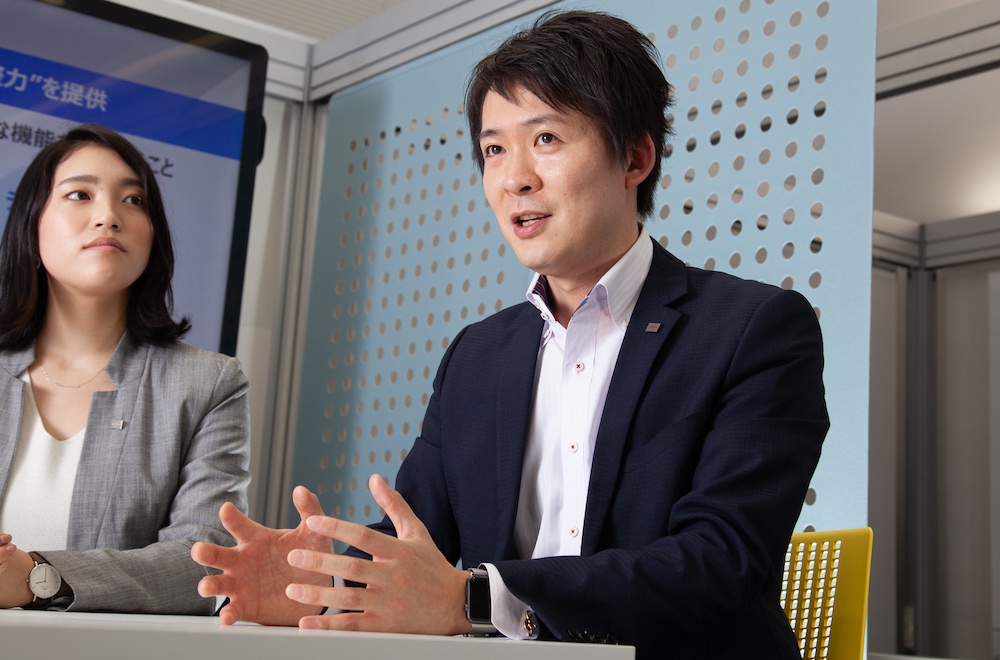
Kotaro Kimura, Energy IoT Dept., Grid Aggregation Div., Toshiba Energy Systems & Solutions Corporation
The division had been created via in-house recruitment, with employees with various skillsets joining the office of their own volition. There are energy experts, as well as experts of the IoT and digital realms. And there is, of course, the general product supply knowledge that Toshiba has accumulated, on things like power generation and energy transmission equipment. Combine that with a technology capable of predicting the energy demand, analyzing, and optimizing technology through IoT, and the division has a lot to work with in terms of developing a VPP operation service business.
“This is the division where the employees can get involved in the creation of a new field, and create new things on their own. There will probably be times where we expand the business by collaborating with a player in a field we never would have considered before. It’s important to remember, however, that VPP is a new field, and we can’t just rely on the methods that led us to success in the past. We try first, then if we fail, move quickly onto the new challenge. And then rinse and repeat, as we set up this new business. For this to happen, we want to create an environment where the younger members are free to say ‘Hey, I want to do this, I want to do that,’” said Mr. Shingai.
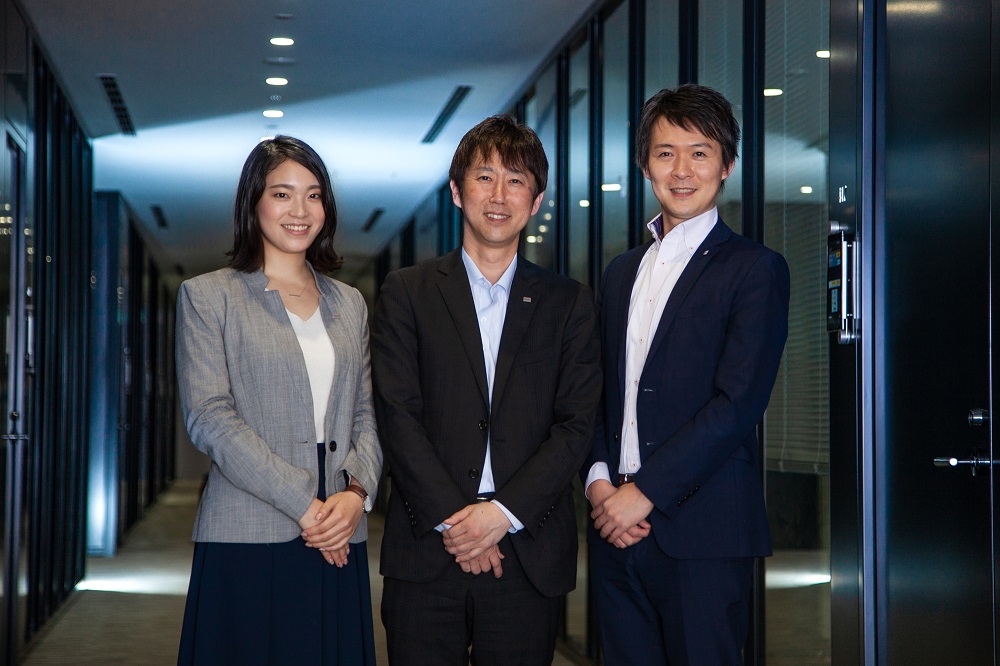
The ideas that they come up with, the seeds of possible businesses, are never-ending. In this office, there is a fusion of the infrastructural knowledge that Toshiba has accumulated over the years, the company’s cutting-edge IoT technologies, and the creativity of young employees. And combined, these create enormous potential—potential that, harnessed by this office, will result in a great leap forward, into the VPP frontier.
![]()
Related Links
*This section contains links to websites operated by companies and organizations other than Toshiba Corporation.
Toshiba to Start Integrated Control Service for Storage Batteries with IoT Technology | News Release | Toshiba Energy Systems & Solutions





